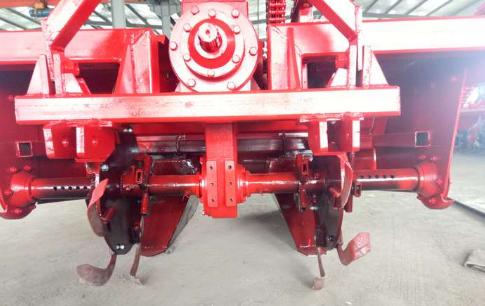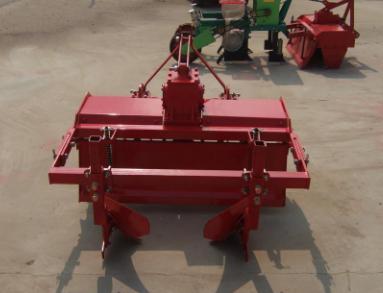A ridging machine is a kind of farm tool that is popular with farmers. It is suitable for ridging operations after field tillage of beans, crops and vegetables. A ridging machine has the features of convenient adjustment of ridge height, ridge distance, ridge row number and angle. And it owns wide application, wide matching range, high operation efficiency and adaptability. At present, most ridging machines have the problems of complex structure and inconvenient disassembly and assembly. It takes a long time to change knives. It is labor-consuming and time-consuming. Some designs choose bolt fixing on the connection. This can make the structure simple and the connection stable. And it is easy to operate and disassemble. In the working process, the tool is fragile and vulnerable. You can fix the tool on its holder with bolts. This will be convenient for changing the tool. It improves the working efficiency.

Tractor power output shaft drives the ridge machine. Rotary tillage ridging and soil preparation machines use rotary tillage knife shafts to cultivate land. At last, it carries out multi-functional ridging operations. This reduces the number of times the tractor goes to the field. This improves work efficiency. And improves the organic fertilizer content of the land. Ridging machine is one of the advanced farm machineries for rotary tillage ridging and soil preparation in dry land in many countries.
The working principle of the ridging machine are as follow. After the tractor connecting with the machine, the tractor power is transmitted to the small conical tooth shaft of the transmission box assembly in the machine through the transmission output shaft and the universal joint assembly. After a pair of small bevel gears decelerate and change direction, it passes a pair of cylindrical gears to reduce speed. The power is transmitted to the ridging knife roller assembly through the spline shaft. It will make the ridging stubble burying knife roller assembly. Mounting rotary tiller on tractors has same principle. Whether it was mounted on walking tractors, wheeled tractors or crawler tractors.
Cutter is the main working part of ridging machine. Its shape is like many small hoe teeth mounting on the horizontal cutter shaft in a spiral shape. The cutter shaft is parallel to the axle of the tractor. The tractor power output shaft is driven to rotate through a universal joint and a gearbox. (the rotation direction is the same as that of the tractor drive shaft). The cutter cuts the soil from top to bottom from the ground with the rotation of the cutter shaft. As the tractor moves forward, the rotating blade continuously cuts into the fallow soil. The cut clods are thrown backward. And they are colliding with the casing and drag board. Then the cut clods further crushed and fell to the ground. Since a ridging tool is fan-shaped, the chopped clods are ridged to the middle to form ridges and ditches.

The cut clods are wedge-shaped profile, perpendicular to the forward side of the machine. It looks like crescent-shaped. The reason for the formation of this shape is the result of the combined movement of the blade following the tractor while rotating with the cutter shaft. And the crescent outline is the composite track of the blade endpoints. The rotation speed of the cutter and the advance speed of the tractor determine the size of the clod. Practice has proved that the blade rotates at a large speed, while the advancing speed is small and the clods are small. When the blade speed is small and the advancing speed is large, the clod is thick. In order to achieve the soil breaking effect required by agriculture, it is necessary to reasonably select the rotating speed and advancing speed of the blade.